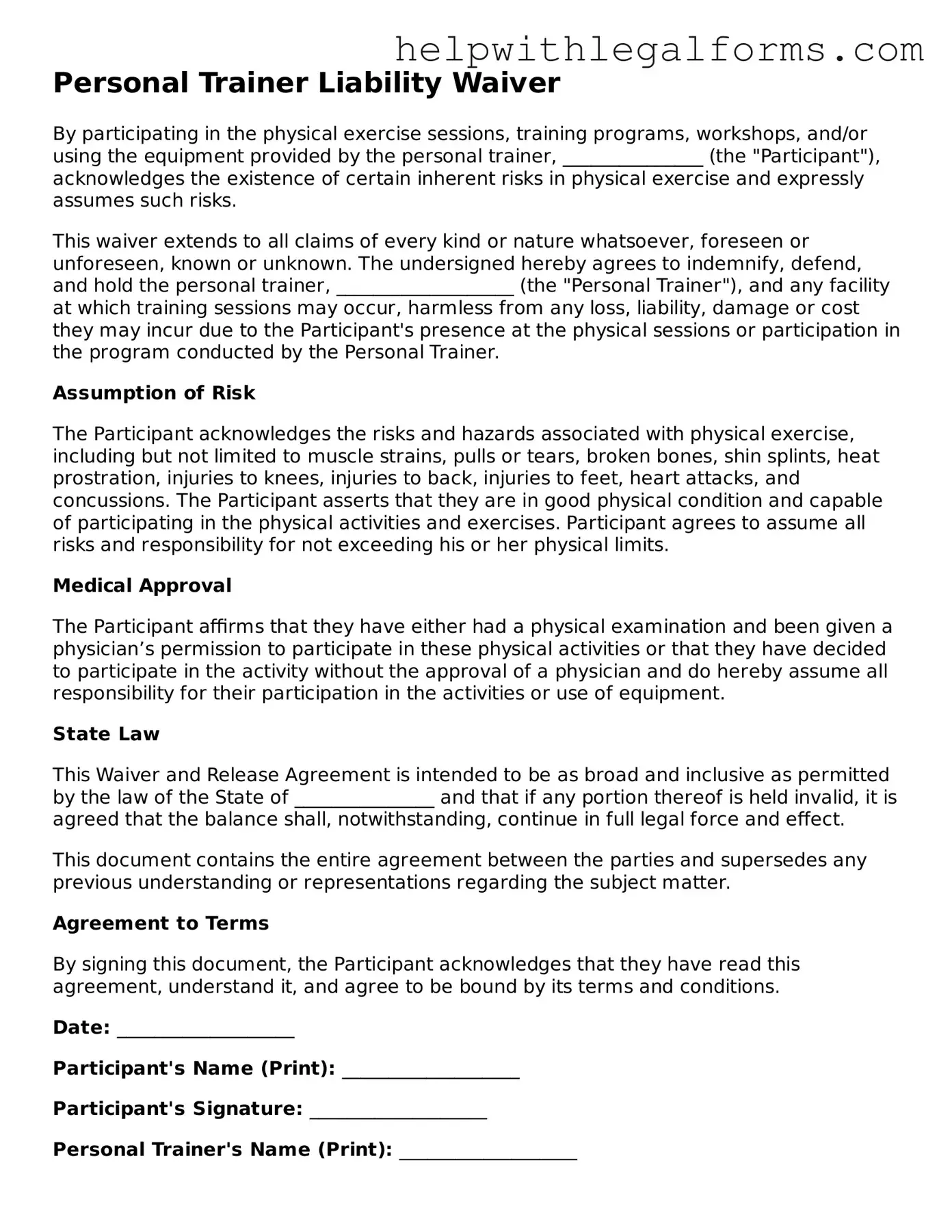Personal Trainer Liability Waiver
By participating in the physical exercise sessions, training programs, workshops, and/or using the equipment provided by the personal trainer, _______________ (the "Participant"), acknowledges the existence of certain inherent risks in physical exercise and expressly assumes such risks.
This waiver extends to all claims of every kind or nature whatsoever, foreseen or unforeseen, known or unknown. The undersigned hereby agrees to indemnify, defend, and hold the personal trainer, ___________________ (the "Personal Trainer"), and any facility at which training sessions may occur, harmless from any loss, liability, damage or cost they may incur due to the Participant's presence at the physical sessions or participation in the program conducted by the Personal Trainer.
Assumption of Risk
The Participant acknowledges the risks and hazards associated with physical exercise, including but not limited to muscle strains, pulls or tears, broken bones, shin splints, heat prostration, injuries to knees, injuries to back, injuries to feet, heart attacks, and concussions. The Participant asserts that they are in good physical condition and capable of participating in the physical activities and exercises. Participant agrees to assume all risks and responsibility for not exceeding his or her physical limits.
Medical Approval
The Participant affirms that they have either had a physical examination and been given a physician’s permission to participate in these physical activities or that they have decided to participate in the activity without the approval of a physician and do hereby assume all responsibility for their participation in the activities or use of equipment.
State Law
This Waiver and Release Agreement is intended to be as broad and inclusive as permitted by the law of the State of _______________ and that if any portion thereof is held invalid, it is agreed that the balance shall, notwithstanding, continue in full legal force and effect.
This document contains the entire agreement between the parties and supersedes any previous understanding or representations regarding the subject matter.
Agreement to Terms
By signing this document, the Participant acknowledges that they have read this agreement, understand it, and agree to be bound by its terms and conditions.
Date: ___________________
Participant's Name (Print): ___________________
Participant's Signature: ___________________
Personal Trainer's Name (Print): ___________________
Personal Trainer's Signature: ___________________
